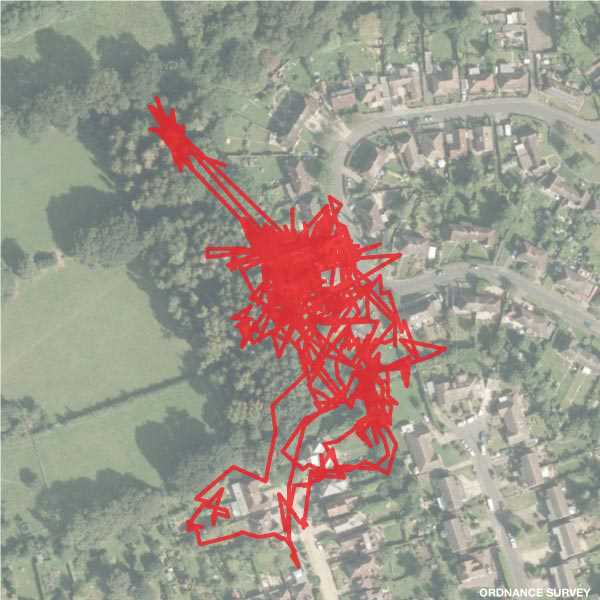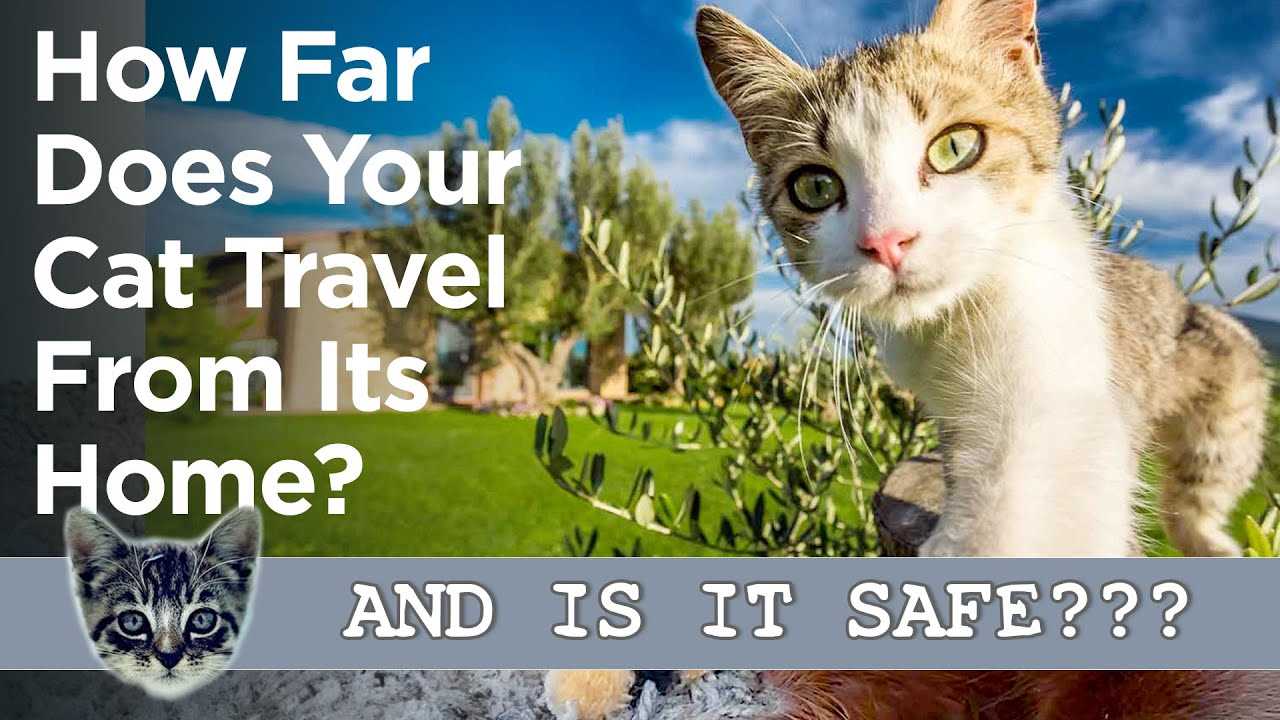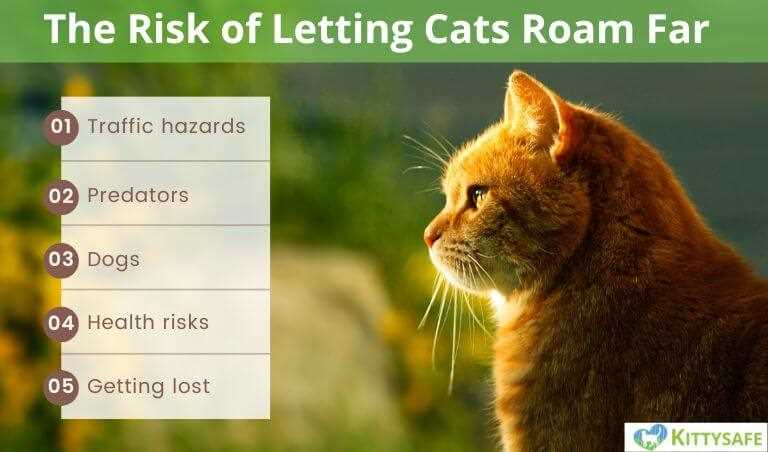



As an inquisitive Scottish Fold, I often wander beyond my familiar territory. On average, my fellow feline friends explore areas within a radius of about 200 meters from their starting point. This distance varies based on factors such as individual personality and environmental conditions.
For those wishing to keep their whiskered companions safe, consider creating a stimulating yard or enclosed space. Offering engaging toys and climbing structures can prevent the desire to roam too far. Remember, even the most adventurous spirits appreciate a secure playground.
Additionally, tracking devices can be valuable for monitoring excursions. These gadgets provide insights into the routes taken and distances covered, allowing pet parents to understand their furry explorers better. It’s a helpful tool for ensuring their well-being while satisfying their natural instincts.
Distance a Feline Might Wander
As an 8-year-old Scottish Fold, I’ve learned a thing or two about my surroundings. If I decide to explore, I typically roam within a radius of about 200 to 300 meters. This area often includes neighboring yards, gardens, and nearby parks.
My curiosity drives me, but I’m cautious. I don’t venture too far into unfamiliar territory. Familiar scents and sounds anchor me, guiding my adventures. It’s essential to note that roaming patterns can shift based on factors like territory, availability of food, and companionship. An unspayed or unneutered feline may stray farther, seeking mates.
Weather conditions also play a role. On sunny days, I might be tempted to explore more, while rain can keep me close to my cozy spot at home. My instincts tell me to return when it’s time for meals or when I feel the need for a nap.
For my fellow felines, it’s crucial for our humans to ensure a safe environment. By providing stimulating indoor activities, they can keep us entertained and reduce our urge to wander too far. If you’re worried about your furry friend’s adventures, consider leash training or creating a secure outdoor enclosure.
Factors Influencing a Feline’s Travel Distance
Age plays a significant role in how much ground I may cover. Younger felines are often more adventurous, while older ones tend to be more cautious and prefer familiar surroundings.
Health is another key aspect. A healthy and active feline is likely to roam more, while those with health issues may stick closer to their territory.
Environment matters too. Urban areas can limit exploration due to traffic and noise, while rural settings often encourage longer excursions due to open spaces.
Social factors influence my wanderings as well. If I sense other animals nearby, especially potential threats like foxes, my distance might shrink significantly. You can check out more on this topic in this interesting article about does foxes eat cats.
Food availability impacts my adventures. If I find a reliable source of tasty treats nearby, such as those discussed in another article on what cat treats are good for cats, I may feel less inclined to wander far.
Lastly, individual personality matters. Some of us are naturally more curious, while others prefer sticking close to our cozy spots. This variation is what makes us unique!
Common Patterns of Stray Cat Movements
Based on my observations, many wanderers often establish a routine within their territories. Most of us tend to stay close to familiar landmarks, such as trees, fences, and buildings. This familiarity helps in navigating the environment efficiently.
Daily Patterns

Typically, roaming begins in the early morning or late afternoon, coinciding with peak activity times for prey. During these hours, I notice an increase in the number of strays moving about, likely in search of food or mates. It’s common for us to explore a radius of several blocks, returning to safe spots intermittently to rest.
Seasonal Variations

The seasons significantly influence roaming habits. In spring, for instance, many of us expand our ranges to find mates. Conversely, during harsher weather, particularly winter, movements may become more restricted, focusing on nearby shelters or consistent food sources. This shift is a survival tactic, ensuring safety and sustenance during challenging conditions.
Understanding these movement patterns can help caregivers provide better environments and resources for us, making life a little easier out there. Social dynamics also play a role; interactions with other wandering companions can either encourage or limit movement based on territory disputes or alliances.
Tips for Keeping Your Feline Close
To ensure I stay nearby, it’s crucial to create a secure environment. Start by keeping windows and doors closed or screened. This prevents accidental escapes while I’m exploring the house.
Safe Outdoor Spaces

Consider building a catio or using a leash and harness for outdoor time. This allows me to enjoy fresh air while remaining protected from wandering too far.
Engagement and Enrichment
- Provide plenty of toys that stimulate my natural hunting instincts.
- Rotate toys regularly to maintain interest.
- Set up climbing structures or shelves for vertical exploration.
- Create interactive play sessions to bond and keep me entertained.
Maintaining a routine with feeding and playtime also helps me feel secure and less inclined to roam. A familiar schedule makes me more comfortable in my territory.
Lastly, ensuring I am spayed or neutered reduces the urge to wander in search of mates. This simple step significantly lowers the chance of me straying too far.
Video:
As an inquisitive Scottish Fold, I often wander beyond my familiar territory. On average, my fellow feline friends explore areas within a radius of about 200 meters from their starting point. This distance varies based on factors such as individual personality and environmental conditions.
For those wishing to keep their whiskered companions safe, consider creating a stimulating yard or enclosed space. Offering engaging toys and climbing structures can prevent the desire to roam too far. Remember, even the most adventurous spirits appreciate a secure playground.
Additionally, tracking devices can be valuable for monitoring excursions. These gadgets provide insights into the routes taken and distances covered, allowing pet parents to understand their furry explorers better. It’s a helpful tool for ensuring their well-being while satisfying their natural instincts.
Distance a Feline Might Wander
As an 8-year-old Scottish Fold, I’ve learned a thing or two about my surroundings. If I decide to explore, I typically roam within a radius of about 200 to 300 meters. This area often includes neighboring yards, gardens, and nearby parks.
My curiosity drives me, but I’m cautious. I don’t venture too far into unfamiliar territory. Familiar scents and sounds anchor me, guiding my adventures. It’s essential to note that roaming patterns can shift based on factors like territory, availability of food, and companionship. An unspayed or unneutered feline may stray farther, seeking mates.
Weather conditions also play a role. On sunny days, I might be tempted to explore more, while rain can keep me close to my cozy spot at home. My instincts tell me to return when it’s time for meals or when I feel the need for a nap.
For my fellow felines, it’s crucial for our humans to ensure a safe environment. By providing stimulating indoor activities, they can keep us entertained and reduce our urge to wander too far. If you’re worried about your furry friend’s adventures, consider leash training or creating a secure outdoor enclosure.
Factors Influencing a Feline’s Travel Distance
Age plays a significant role in how much ground I may cover. Younger felines are often more adventurous, while older ones tend to be more cautious and prefer familiar surroundings.
Health is another key aspect. A healthy and active feline is likely to roam more, while those with health issues may stick closer to their territory.
Environment matters too. Urban areas can limit exploration due to traffic and noise, while rural settings often encourage longer excursions due to open spaces.
Social factors influence my wanderings as well. If I sense other animals nearby, especially potential threats like foxes, my distance might shrink significantly. You can check out more on this topic in this interesting article about does foxes eat cats.
Food availability impacts my adventures. If I find a reliable source of tasty treats nearby, such as those discussed in another article on what cat treats are good for cats, I may feel less inclined to wander far.
Lastly, individual personality matters. Some of us are naturally more curious, while others prefer sticking close to our cozy spots. This variation is what makes us unique!
Common Patterns of Stray Cat Movements
Based on my observations, many wanderers often establish a routine within their territories. Most of us tend to stay close to familiar landmarks, such as trees, fences, and buildings. This familiarity helps in navigating the environment efficiently.
Daily Patterns

Typically, roaming begins in the early morning or late afternoon, coinciding with peak activity times for prey. During these hours, I notice an increase in the number of strays moving about, likely in search of food or mates. It’s common for us to explore a radius of several blocks, returning to safe spots intermittently to rest.
Seasonal Variations

The seasons significantly influence roaming habits. In spring, for instance, many of us expand our ranges to find mates. Conversely, during harsher weather, particularly winter, movements may become more restricted, focusing on nearby shelters or consistent food sources. This shift is a survival tactic, ensuring safety and sustenance during challenging conditions.
Understanding these movement patterns can help caregivers provide better environments and resources for us, making life a little easier out there. Social dynamics also play a role; interactions with other wandering companions can either encourage or limit movement based on territory disputes or alliances.
Tips for Keeping Your Feline Close
To ensure I stay nearby, it’s crucial to create a secure environment. Start by keeping windows and doors closed or screened. This prevents accidental escapes while I’m exploring the house.
Safe Outdoor Spaces

Consider building a catio or using a leash and harness for outdoor time. This allows me to enjoy fresh air while remaining protected from wandering too far.
Engagement and Enrichment
- Provide plenty of toys that stimulate my natural hunting instincts.
- Rotate toys regularly to maintain interest.
- Set up climbing structures or shelves for vertical exploration.
- Create interactive play sessions to bond and keep me entertained.
Maintaining a routine with feeding and playtime also helps me feel secure and less inclined to roam. A familiar schedule makes me more comfortable in my territory.
Lastly, ensuring I am spayed or neutered reduces the urge to wander in search of mates. This simple step significantly lowers the chance of me straying too far.
Video:
As an inquisitive Scottish Fold, I often wander beyond my familiar territory. On average, my fellow feline friends explore areas within a radius of about 200 meters from their starting point. This distance varies based on factors such as individual personality and environmental conditions.
For those wishing to keep their whiskered companions safe, consider creating a stimulating yard or enclosed space. Offering engaging toys and climbing structures can prevent the desire to roam too far. Remember, even the most adventurous spirits appreciate a secure playground.
Additionally, tracking devices can be valuable for monitoring excursions. These gadgets provide insights into the routes taken and distances covered, allowing pet parents to understand their furry explorers better. It’s a helpful tool for ensuring their well-being while satisfying their natural instincts.
Distance a Feline Might Wander
As an 8-year-old Scottish Fold, I’ve learned a thing or two about my surroundings. If I decide to explore, I typically roam within a radius of about 200 to 300 meters. This area often includes neighboring yards, gardens, and nearby parks.
My curiosity drives me, but I’m cautious. I don’t venture too far into unfamiliar territory. Familiar scents and sounds anchor me, guiding my adventures. It’s essential to note that roaming patterns can shift based on factors like territory, availability of food, and companionship. An unspayed or unneutered feline may stray farther, seeking mates.
Weather conditions also play a role. On sunny days, I might be tempted to explore more, while rain can keep me close to my cozy spot at home. My instincts tell me to return when it’s time for meals or when I feel the need for a nap.
For my fellow felines, it’s crucial for our humans to ensure a safe environment. By providing stimulating indoor activities, they can keep us entertained and reduce our urge to wander too far. If you’re worried about your furry friend’s adventures, consider leash training or creating a secure outdoor enclosure.
Factors Influencing a Feline’s Travel Distance
Age plays a significant role in how much ground I may cover. Younger felines are often more adventurous, while older ones tend to be more cautious and prefer familiar surroundings.
Health is another key aspect. A healthy and active feline is likely to roam more, while those with health issues may stick closer to their territory.
Environment matters too. Urban areas can limit exploration due to traffic and noise, while rural settings often encourage longer excursions due to open spaces.
Social factors influence my wanderings as well. If I sense other animals nearby, especially potential threats like foxes, my distance might shrink significantly. You can check out more on this topic in this interesting article about does foxes eat cats.
Food availability impacts my adventures. If I find a reliable source of tasty treats nearby, such as those discussed in another article on what cat treats are good for cats, I may feel less inclined to wander far.
Lastly, individual personality matters. Some of us are naturally more curious, while others prefer sticking close to our cozy spots. This variation is what makes us unique!
Common Patterns of Stray Cat Movements
Based on my observations, many wanderers often establish a routine within their territories. Most of us tend to stay close to familiar landmarks, such as trees, fences, and buildings. This familiarity helps in navigating the environment efficiently.
Daily Patterns

Typically, roaming begins in the early morning or late afternoon, coinciding with peak activity times for prey. During these hours, I notice an increase in the number of strays moving about, likely in search of food or mates. It’s common for us to explore a radius of several blocks, returning to safe spots intermittently to rest.
Seasonal Variations

The seasons significantly influence roaming habits. In spring, for instance, many of us expand our ranges to find mates. Conversely, during harsher weather, particularly winter, movements may become more restricted, focusing on nearby shelters or consistent food sources. This shift is a survival tactic, ensuring safety and sustenance during challenging conditions.
Understanding these movement patterns can help caregivers provide better environments and resources for us, making life a little easier out there. Social dynamics also play a role; interactions with other wandering companions can either encourage or limit movement based on territory disputes or alliances.
Tips for Keeping Your Feline Close
To ensure I stay nearby, it’s crucial to create a secure environment. Start by keeping windows and doors closed or screened. This prevents accidental escapes while I’m exploring the house.
Safe Outdoor Spaces

Consider building a catio or using a leash and harness for outdoor time. This allows me to enjoy fresh air while remaining protected from wandering too far.
Engagement and Enrichment
- Provide plenty of toys that stimulate my natural hunting instincts.
- Rotate toys regularly to maintain interest.
- Set up climbing structures or shelves for vertical exploration.
- Create interactive play sessions to bond and keep me entertained.
Maintaining a routine with feeding and playtime also helps me feel secure and less inclined to roam. A familiar schedule makes me more comfortable in my territory.
Lastly, ensuring I am spayed or neutered reduces the urge to wander in search of mates. This simple step significantly lowers the chance of me straying too far.










